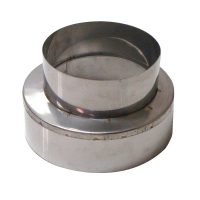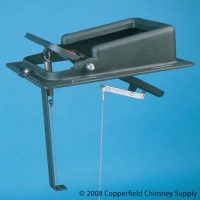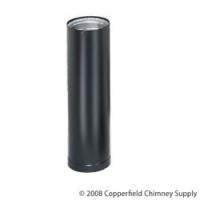Some of the most common questions that homeowners with fireplaces and have are “How often should chimney cleaning be done?” and “How do I know if my chimney needs to be cleaned?”
Regular chimney cleaning is necessary in order to remove the creosote deposits that build up within the chimney system during use of the fireplace. These deposits are highly flammable, and can lead to a dangerous chimney fire (an uncontrolled 2000° fire burning inside of the chimney). A report published by the US Consumer Product Safety Commission stated that fires that originated in chimneys and fireplaces were the cause of 27,000 residential fires and 20 known deaths (most current statistics as of Aug. 2010). At the very best, a chimney fire will cause significant damage to the chimney structure that will require thousands of dollars to repair.
So, how often should chimney cleaning be done? In a nutshell, here in Southern California, the guidelines are every 1-2 years for average use. Given the generality of the term “average”, the importance of having an annual chimney inspection becomes clear. The National Fireplace Protection Association (NFPA) recommends an annual Level I Inspection of the fireplace/chimney/heating appliance. Ideally, this inspection should be done before the start of the burning season, by a qualified chimney professional. The gold standard for this qualification is certification by the Chimney Safety Institute of America (CSIA). Your CSIA certified chimney sweep will perform the Level I Inspection, and be able to determine the overall condition of the chimney, and will let you know if chimney cleaning is needed. In most cases, the chimney cleaning can be performed during the same visit.
The chimney smokes back into the living area during use. While there are certainly other issues that can cause this problem, a chimney that otherwise performs well and begins to gradually put more and more smoke back into the room during use may be due for chimney cleaning.
There is a “sooty” or “campfire” smell in the house, even when not using the fireplace. This is usually a sign that chimney cleaning is needed. Fireplace odors come from the creosote deposits within the chimney system. They are usually worse in high humidity, during the summertime, and when it rains. A thorough chimney cleaning, designed to remove the creosote deposits that accumulate over time, will usually correct this problem.
In conclusion, regular chimney cleaning is an important part of home maintenance. Finding a qualified chimney professional in your area, and having an annual inspection of your fireplace/chimney will help to ensure that you and your family enjoy the quality time spent around the fireplace for many years to come.






